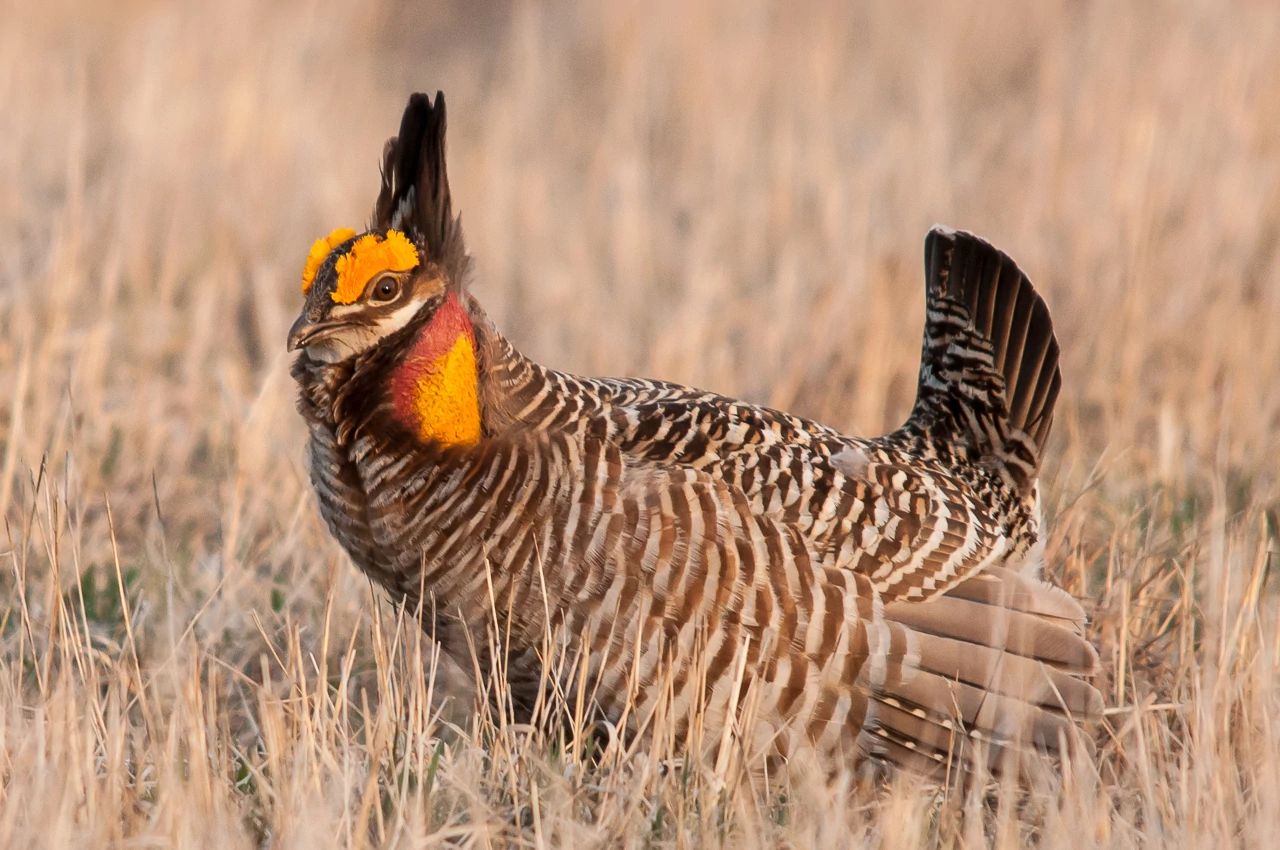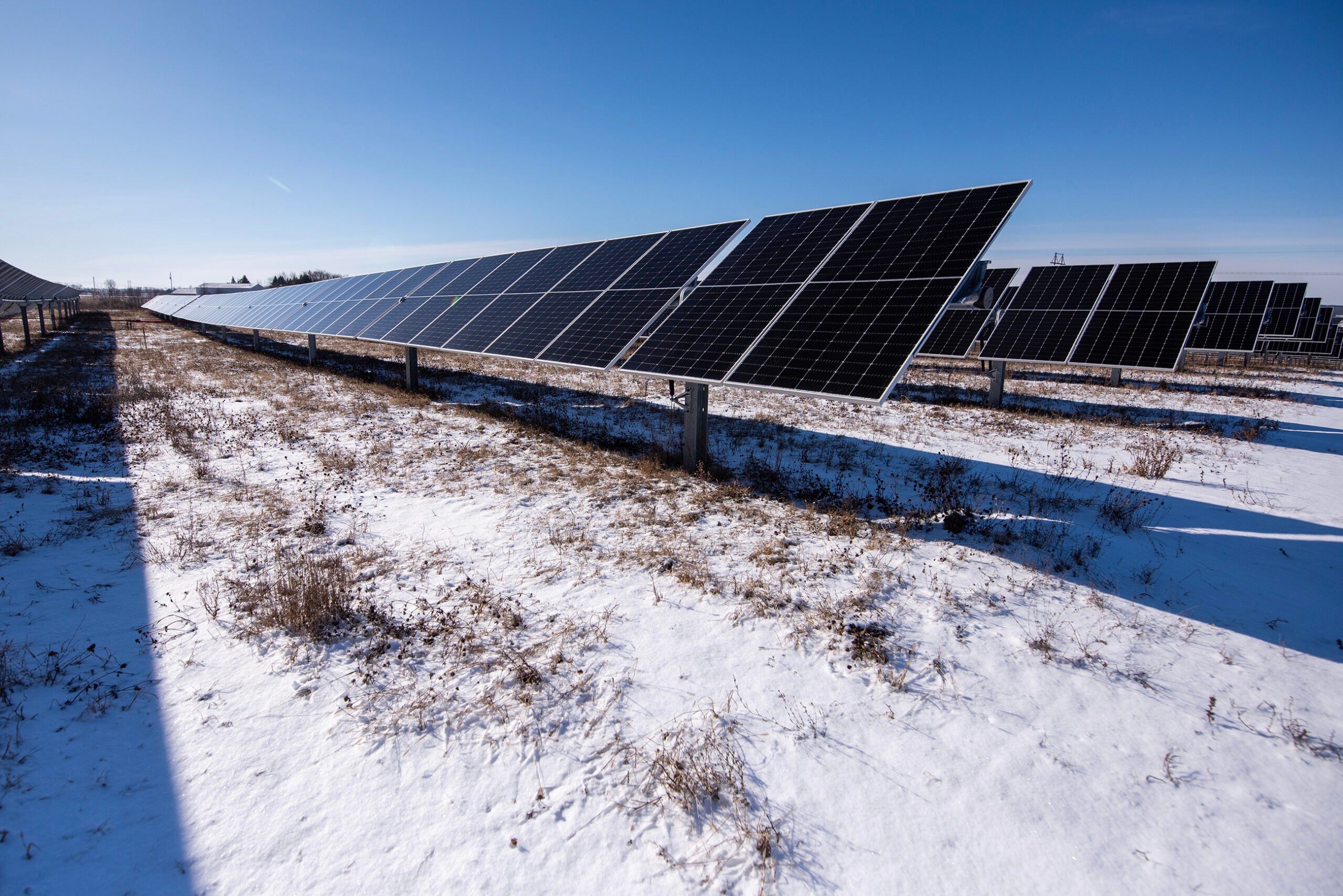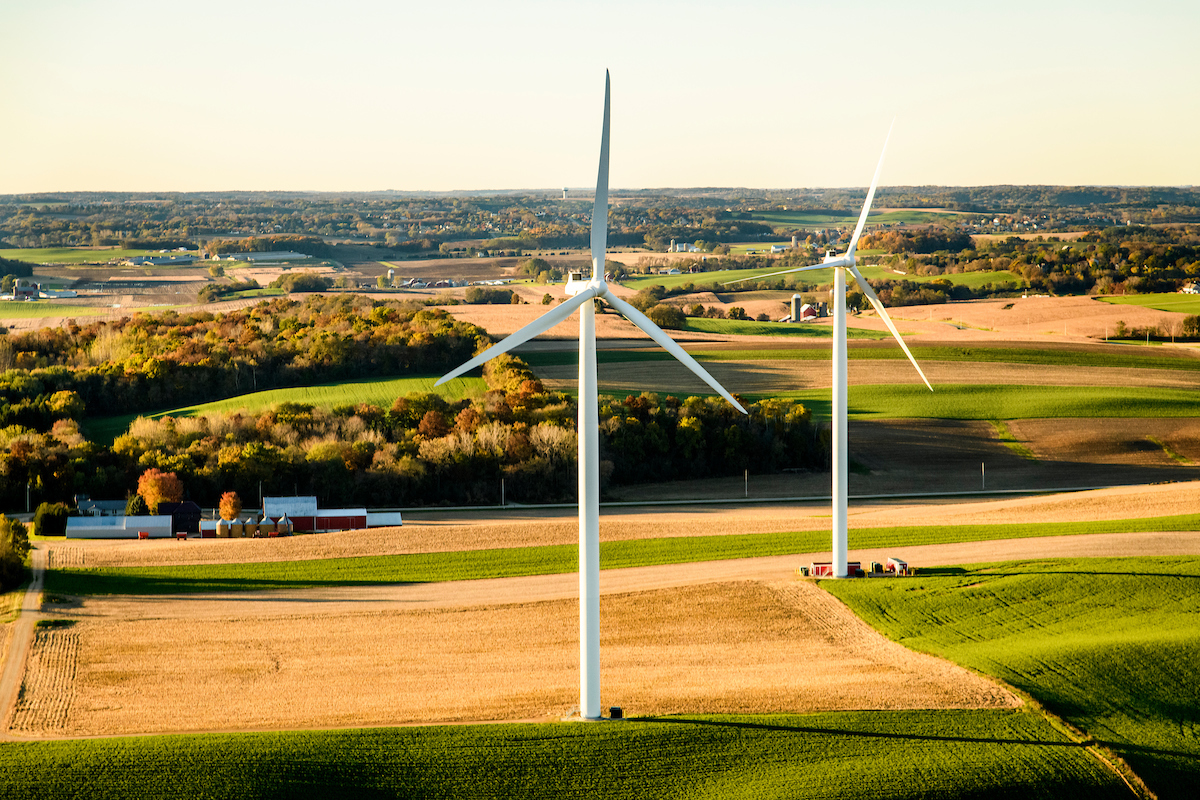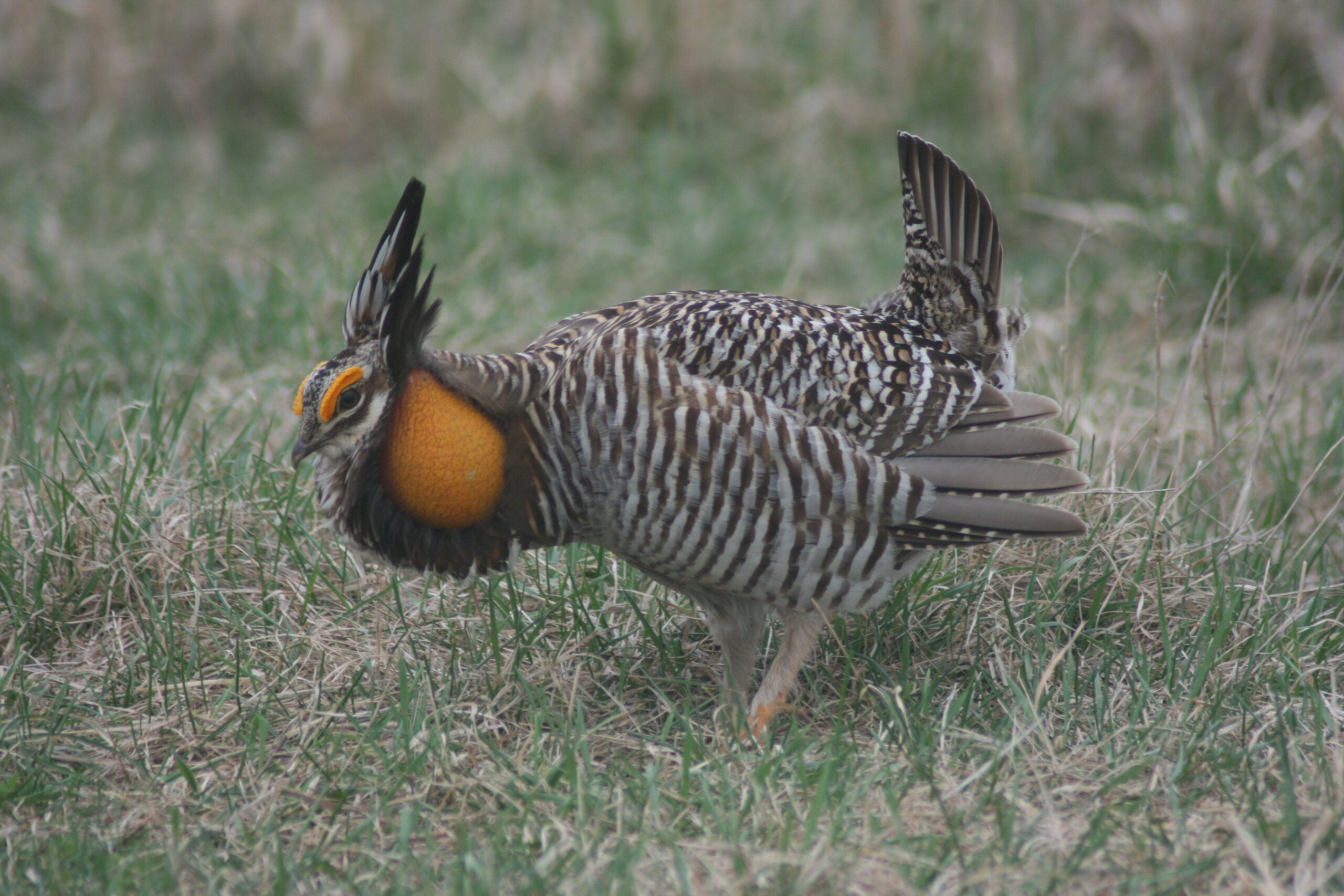An environmental review recommends a solar developer scale back its plans for the roughly $2 billion Vista Sands Solar project in Portage County to protect Wisconsin’s greater prairie-chicken population.
Vista Sands Solar, LLC, an affiliate of Doral Renewables, wants to build a solar facility that would produce around 1,300 megawatts of power with around 300 megawatts of battery storage. The facility is more than four times larger than the Badger Hollow Solar farm, the biggest solar project currently online in Wisconsin.
If built, renewable energy advocates say it would be the largest solar project in the state. It would also be one of the largest in the nation, according to Jon Baker, vice president of development for Doral Renewables. He noted Wisconsin needs around 30,000 megawatts of solar to meet its goal of net-zero carbon emissions by 2050.
News with a little more humanity
WPR’s “Wisconsin Today” newsletter keeps you connected to the state you love without feeling overwhelmed. No paywall. No agenda. No corporate filter.
“This project can really help further those goals,” Baker said. “Once constructed, that project would deliver over 2 million megawatt-hours per year to the grid, and that is equivalent to what is used by around 200,000 average homes.”
However, environmental regulators say the project as currently proposed could come at a cost to the greater prairie-chicken population, according to a final environmental impact statement. The native grouse species has been listed as threatened in Wisconsin since 1979.
The Wisconsin Department of Natural Resources and Public Service Commission issued the joint environmental review last week. The agencies received around 400 comments on its draft review, including concerns about the prairie-chicken.
Regulators say the birds may be especially sensitive to large-scale solar energy projects because they require large open landscapes and use locations known as leks where males conduct displays to attract females for breeding. They say their tendency to avoid energy structures, roads and fences may place prairie-chickens at high risk for habitat loss and further population declines.
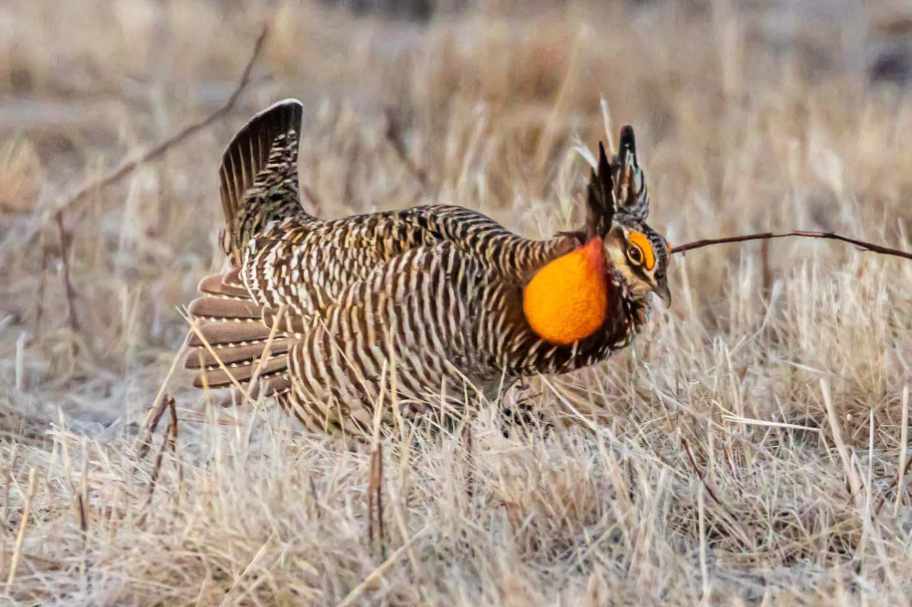
The review’s primary recommendation asks that the commission require the developer to remove 10 of its primary areas for solar arrays, as well as four alternate sites. A secondary option would involve removing slightly fewer areas from the project. While the latter would reduce impacts, regulators say negative effects would likely remain.
“Should the Commission choose to order this secondary recommendation instead of the primary recommendation, any cumulative adverse impacts of past, present, and future projects will be heightened and may reduce the long-term viability of Wisconsin’s (greater prairie-chicken) population,” the document states.
Once common in southern and western Wisconsin, the greater prairie-chicken has declined in numbers over decades due to loss of grassland habitat driven by agriculture, residential development and resource extraction. That has largely restricted the population around four wildlife areas in central Wisconsin, including the Buena Vista Wildlife Area. Parts of the Vista Sands Solar project are located nearby portions of the wildlife area with the largest population of the grassland bird.
Conservation groups say they agree with the review’s recommendations. Tom Hauge is a district director in southwestern Wisconsin with the Wisconsin Wildlife Federation. He’s also co-chair of the wildlife working group with Wisconsin’s Green Fire.
“Roughly about two-thirds of the remaining population reside on the Buena Vista Wildlife Area,” Hauge said. “So many conservation organizations recognize that it’s important that the integrity of that property be conserved and protected so that we don’t lose the species from Wisconsin.”
The state’s population has fallen from highs of around 1,000 males in the early 1980s to an average of 338 males counted across their range in central Wisconsin from 2004 to 2019, according to the DNR.
“When you’re dealing with a species that’s threatened or endangered, the first step should be to avoid creating risk in the first place,” Hauge said. “By not developing those sites, they’d be adhering to that principle.”
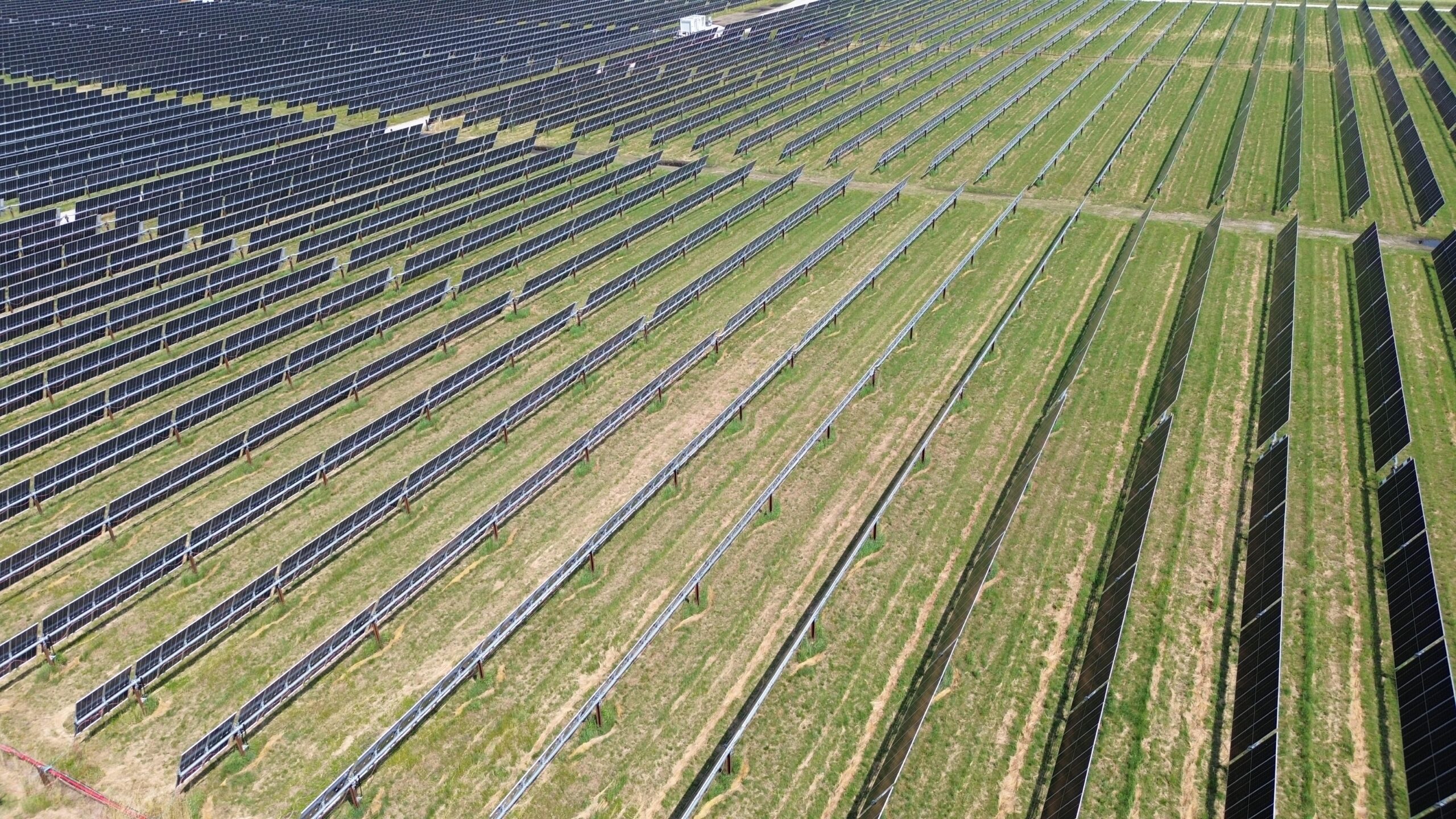
Hauge argues the developer could use alternative sites to build the project, pointing to additional lands it is leasing. Vista Sands Solar is leasing around 10,000 acres for the facility. It is proposing to build the project on roughly 7,100 acres in the village of Plover, as well as the towns of Grant, Plover and Buena Vista.
Baker argued the project has tried to minimize or avoid effects on the bird, noting that has already included the elimination of areas that have been highly used by prairie-chickens. He said they’ve also agreed to bury power lines associated with a 345 kilovolt transmission line that would be built to connect the project to the grid.
If the recommendations were adopted, Baker said they would likely have to remove 270 to 370 megawatts in solar arrays or roughly 20 to 30 percent of the project. The removal of those panels could require them to build closer to houses or other areas they had attempted to avoid, such as cultural areas or the village of Plover.
“Effectively we will have run out of other areas to move the panels to and would just have to reduce the project size,” Baker said.
Sam Dunaiski, executive director of RENEW Wisconsin, said the renewable energy advocate supports the project, and it hopes the Public Service Commission will approve the project as proposed.
Solar energy currently makes up around 3 percent of all power generated in Wisconsin, according to utility regulators. If the project were approved, Dunaiski said it would account for just as much power in the state’s energy mix.
“We’re talking about a significant amount of additional clean energy going onto Wisconsin’s electric grid,” Dunaiski said.
Dunaiski voiced concerns that the review did not quantify the climate benefits of the project. Baker said the project would avoid about 1.7 million tons of carbon emissions in the first year of operation as it displaces coal and natural gas from the regional electric grid.
As for concerns about prairie-chickens, Dunaiski said that represents just one aspect of the project.
“The overall benefits of Vista Sands are very favorable for the environment, which is likely a better outcome for the prairie-chicken than industrial agriculture,” Dunaiski said.
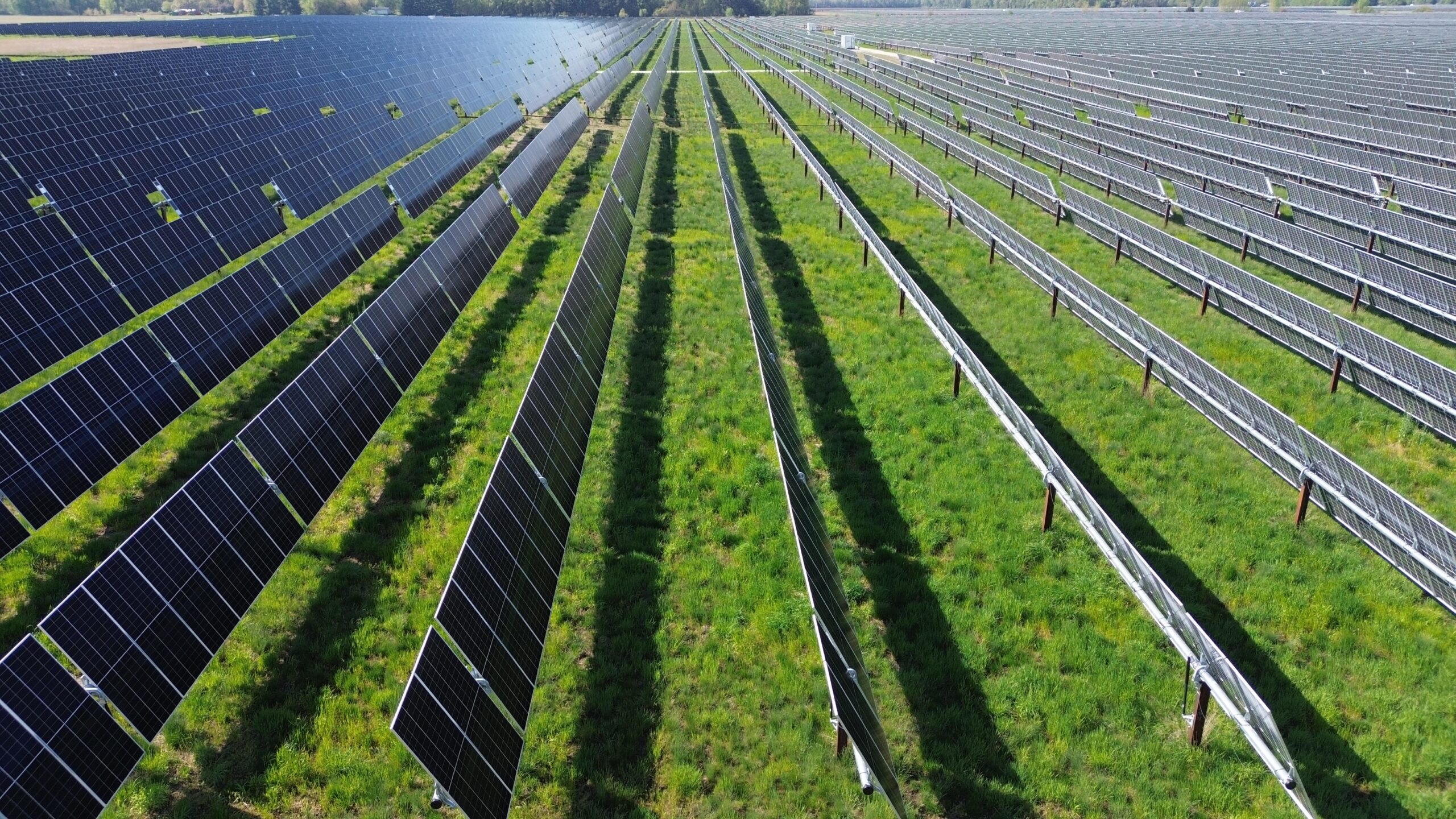
He noted it’s also unclear how prairie-chickens may react to solar farms. The environmental impact statement acknowledged that there are no known studies on how the species may respond to solar panel arrays. However, regulators said research shows evidence that prairie-chickens avoid other structures, including fences and roads. While effects are unknown, they said studies suggest the bird may avoid solar arrays, resulting in loss of breeding habitat.
Some studies on wind energy development indicate nesting success and adult survival are largely unaffected by wind facilities, noting the species may be more affected by livestock grazing or row crops. But other research cautions that findings rely on short periods of study, and changes in the use of habitats or leks by female prairie-chickens indicates behavioral responses that could affect the population.
Hauge said the Wisconsin Wildlife Federation and Wisconsin’s Green Fire are strong supporters of solar development in the state, adding the facility would be a tremendous boost for solar power in Wisconsin.
“We’re not against Vista Sands developing this project,” Hauge said. “We are only asking that they do it in an environmentally responsive way.”
Baker claimed that taking the land out of agriculture would avoid use of up to 3 million pounds of fertilizer each year, as well as thousands of gallons of insecticides and herbicides. The review noted changes in land use could reduce contamination from those sources entering groundwater.
If built, Baker added the project would have a $200 million economic impact and create around 400 to 500 jobs during construction. The developer would also provide around $10 million in payments to landowners each year, as well as $6.5 million in payments to local towns and Portage County.
A public hearing on the project will be held on Aug. 15 at the Best Western Hotel & Convention Center in Plover at 2 p.m. and at 6 p.m.
If approved, the project is slated to begin construction late next year, and the facility would come online in 2028.
Wisconsin Public Radio, © Copyright 2025, Board of Regents of the University of Wisconsin System and Wisconsin Educational Communications Board.

